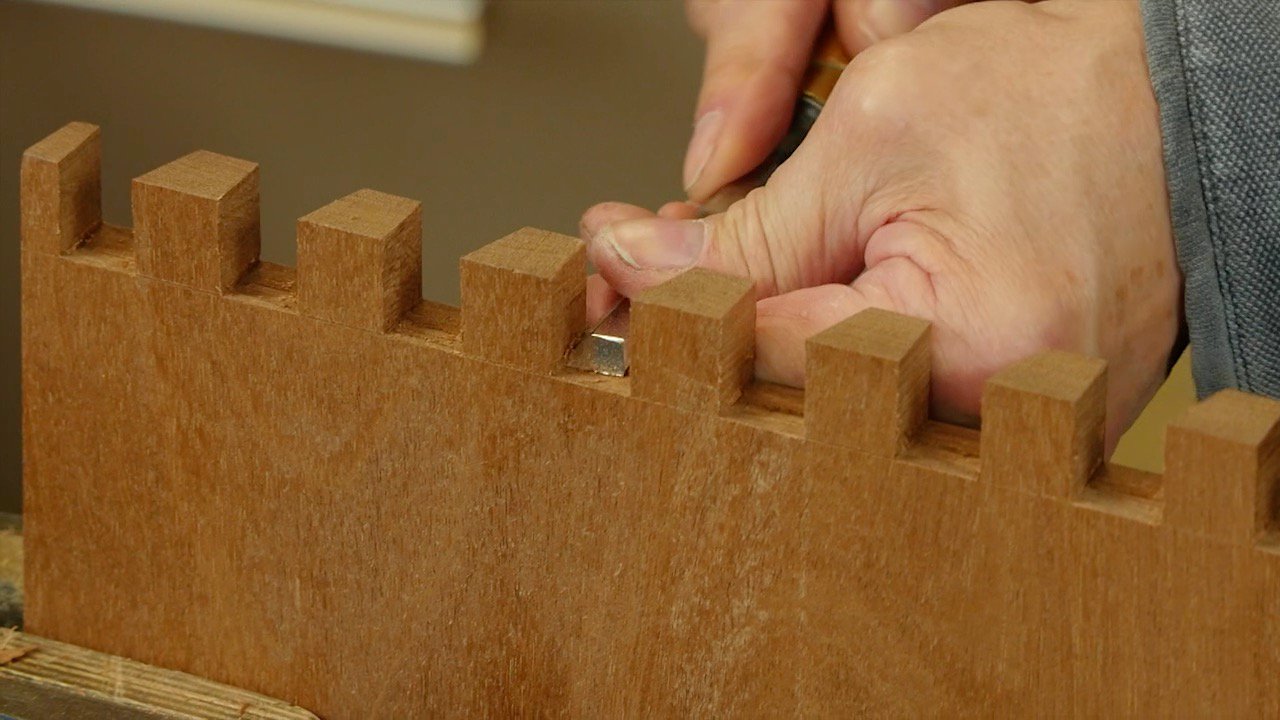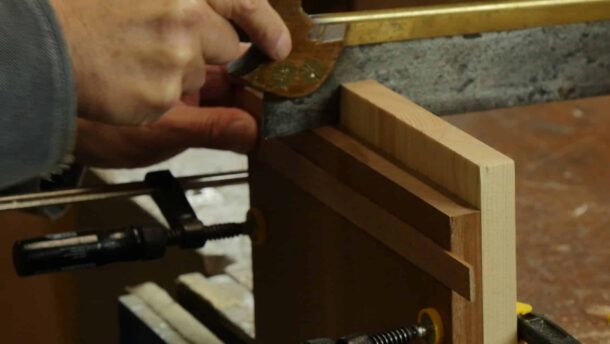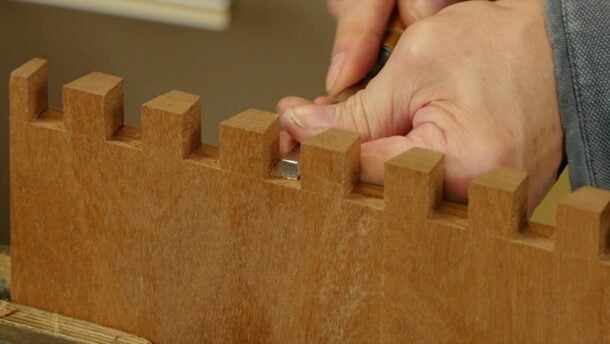A Paul Sellers Dovetail Technique
Posted 11 August 2016
This is the introduction for a free series. Want to watch the whole thing? It is free to do so, you just need to log into the site, and you can enjoy this series and many other videos we think you will love.
Paul has developed a method for creating neat, equally-spaced dovetail joints by hand. In the videos below he shows us how to create and use a pattern with speed and efficiency, eliminating the need to lay out each dovetail individually.




I just tried the dovetail technique and can report a decent success on the first try. I have cut dovetails by hand in the past with poor results usually leaving major gaps in the pin to tail interfaces. I always though it my layout technique was at fault. Using Paul’s technique I was able to make a the joint with little or no gaps. On the first attempt the two pieces went together with just a little bit of persuasion; no trimming of tails or pins, no unusual pounding, they just slipped into place. Paul, I can’t tell you how pleased I am and grateful for you sharing this technique.
It’s not a perfect joint. I had good success with the sawing but I need more practice with chopping out the waste with a chisel. Also, I think my wood choice (#2 yellow pine) was not a good one to start with. YP is very hard and brittle to finesse with a chisel. But overall it was a resounding success. Thank you again for sharing this technique.
during the video Paul talks about the glue up process when the dovetails are so tight. is there a follow up video showing that process?
Hello Kent, this is an excerpt from the wall hung tool cabinet project, in which Paul shows the glue up process.
Thanks, Phil
I’m a bit confused about the sawing for this part of the dovetails. Does Paul put his saw right in the knife line, or does he put it right next to the knife line like if he was cutting a tenon or rebate?
Cut on the waste side if you want to stay on layout. You might even want to be well clear of the line and pare to the line with a chisel.
It actually doesn’t make all that much difference as far as fit is concerned when you cut the tails, but when you cut the pins, there will be gaps if you cut past the knife lines.
Hi Paul, Philip,
Excellent idea and a lot cheaper than buying one of those magnetic dovetail guides! However, I have one question: why is it necessary to have a separate sacrificial piece to define the square lines on the end grain, rather than cut the knife walls on the template itself?
Regards
Hamish
Hi Hamish,
It is to ensure the guide itself is square.
Kind Regards,
Izzy
Hi,Lzzy,
Thanks for your reply. Yes, I understand that is it’s purpose, but why is that better than just making a square knife wall on the template? Is it because of the extra width?
Regards
Hamish
@JAYCEEEM Are you asking about Paul clamping a piece of scrap to the template around 9′ into the first video? Besides giving extra width, the sacrificial piece provides face-grain rather than end grain. Face-grain takes a knife cut and forms a definite knife wall. A knife wall isn’t as good in end grain. Between the extra width to guide the saw and the deeper, more definitive knife wall, the sacrificial piece helps give the squarest possible cut into the template end grain.
There’s another factor as well Hamish. You can start the tail cut perfectly square but in an effort to follow the rake of the dovetail, you can end up twisting the saw and the side of your dovetail will have essentially a compound miter and those are nearly impossible to fit. The much wider sacrificial piece makes it harder to do that – not impossible, but certainly harder.
Making perfectly square tail cuts from start to finish is the biggest secret to dovetails. If the cut line on the inside of the tail board doesn’t line up exactly with the cut line on the outside, it’s nearly impossible to get the joint to fit correctly.
Hi Ed,
Yes, that is the part I was talking about. Thank you for your clear explanation. I hadn’t considered the benefit of cutting the knife wall in face grain. It makes perfect sense to me now.
The technique has proved ideal for my current project, the base board for a model railway, for which I need to cut 16 separate dovetails. I just need to make sure I cut the pins on right side of the workpiece! 🙁
Thanks again.
Regards
Hamish
Thanks for another excellent video. I am not sure if this is the right place to ask this questions but could not think of a more sensible place to ask it:
Do you have plans to make a video on marking out and cutting angled dovetail joints, that is, joining pieces at angles other than 90 degrees? I am interested in making boxes shaped as octagonal prisms and as pyramidal frustums with sloping sides so deviation away from 90 degrees in both rotational axes of the two pieces of wood would be of interest to me.
Thanks!
Hi,
Thank you for getting in touch, Paul says:
I have no plans to create octagonal prisms with dovetails, it’s a complicated process and for our audience, it would have a very narrow margin of interest.
Sorry we couldn’t be of more help!
Kind Regards,
Izzy
I would value your input on Chisels. It seems there are a massive amount of Chisels and the prices vary dramatically. Thanks in advance for your input.
Hi Dwayne,
Our sister site, common Woodworking has all that sort of information. Here is our page on buying chisels:
https://commonwoodworking.com/buying-a-chisel/